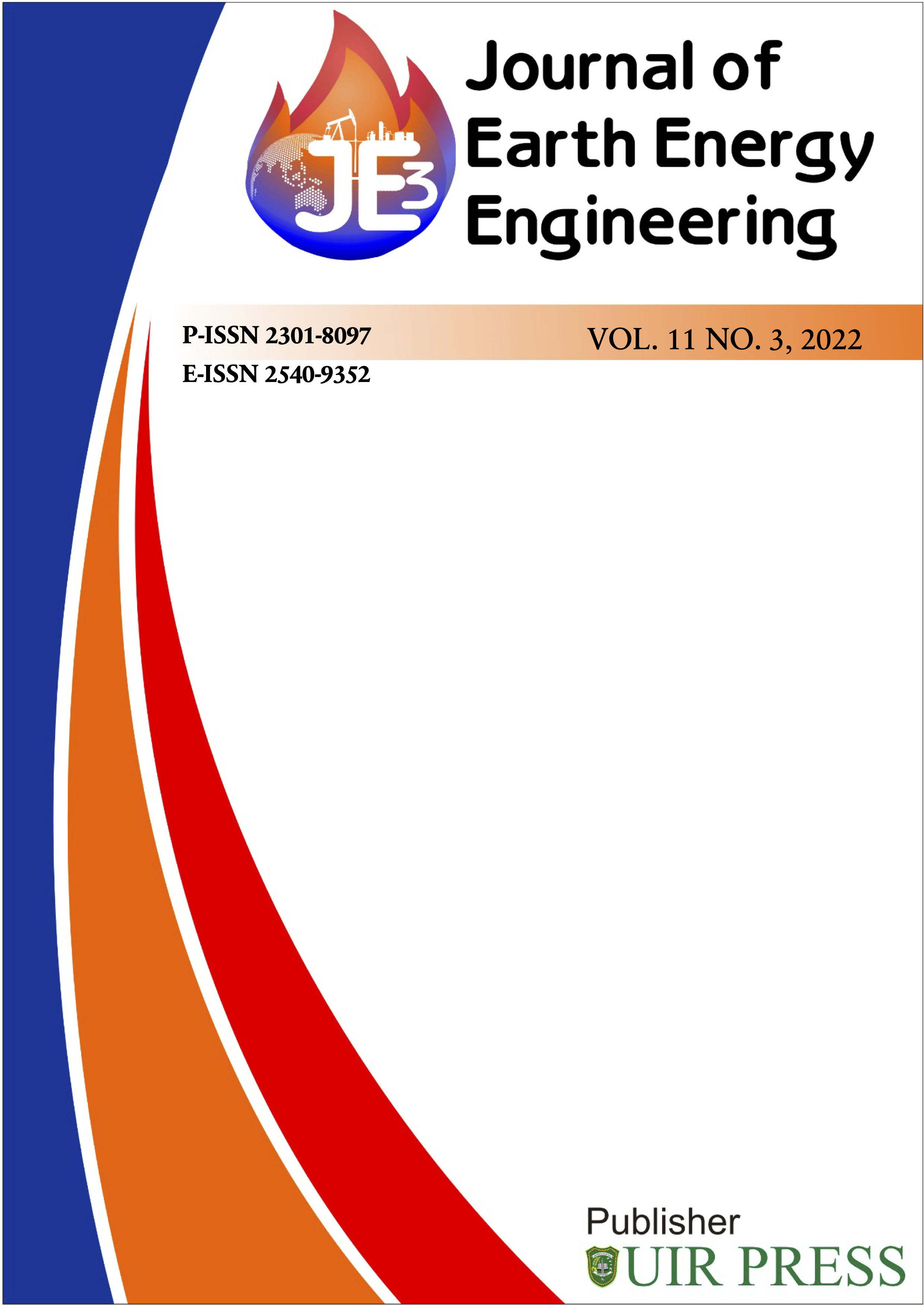The Effect of Different Gas Water Ratio on Recovery Factor and CO2 Storage Capacity in Water Alternating Gas Injection. A Case Study: “V” Field Development, North Sea
Abstract
CO2 injection is one of the Enhanced Oil Recovery (EOR) methods. In this study Water alternating gas (WAG) CO2 injection method was used to obain the maximum sweep efficiency. The purpose of this study was to analyze the effect of gas water ratio (GWR) value on recovery and CO2 storage capacity, and to analyze the best scenario in term of technical objective.
This study was carried out using E300 reservoir simulator. The increase in recovery and CO2 storage were observed throught the parameters of recovery factor and CO2 storage capacity, while the determination of the best scenario in term of technical objective was observed using the parameters of objective function. This study was carried out in 3 different scenarios, which were the injection of 100% CO2, 60% CO2and 40% water, and 40% CO2 and 60% water
Based on the observation, it was founded that third scenario with the GWR of 40:60 resulted the highest cumulative production and recovery factor with the value reaching 14.1 milliom m3 and 67.4%. Meanwhile the second scenario with the GWR of 60:40 has the highest CO2 storage capacity of 3 billion Sm3 CO2. The second scenario has the best performance in term of technical objective with the value of objective function reaching 0.45.
Full text article
Authors
This is an open access journal which means that all content is freely available without charge to the user or his/her institution. The copyright in the text of individual articles (including research articles, opinion articles, and abstracts) is the property of their respective authors, subject to a Creative Commons CC-BY-SA licence granted to all others. JEEE allows the author(s) to hold the copyright without restrictions and allows the author to retain publishing rights without restrictions.




